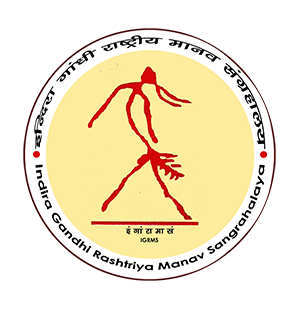पेघाली, मृद भांड पकाने का पारंपरिक भट्टा
समुदाय: कुमार एवं हीरा
क्षेत्र: सलमोरा गाँव
जिला: माजुली
राज्य: असम
कुमार व हीरा असम के देशज कुम्हार समुदाय है जो मुख्यतः माजुली के तीन गावों बरबोका, कमजन इलंगी और सलमोरा मे केन्द्रित है। दोनों समुदाय कुंभकारी के लिए जाने जाते है जिनकी मृदभांड बनाने की तकनीक प्राचीन एवं कई पीढी पुरानी है परंतु दोनों ही समुदायों द्वारा मृदभांड बनाने में प्रयुक्त मिट्टी एवं प्रकिया में काफी अंतर पाया जाता है। कुमार क्ले (कुमार माटी) हल्की काली तथा प्रकृति अनुसार गोंद जैसी चिपचिपी होती है जबकी हीराओं के द्वारा इस्तेमाल की जाने वाली मिट्टी हीरामती कहलाती है एवं तालाब अथवा कृषि भूमि पर पाई जाती है।
मृदभांड बनाने की प्रकिया बहुत गहन होती है जिसमें मिटटी की कटाई, उस पर धूल का छिड़काव के बाद आकार को देने के पश्चात या तो थूपा (निचले असम प्रयुक्त) या फिर पेघाली (उपरी असम में प्रयुक्त) में पात्र पकाये जाने तक है। वांछित आकार देने के लिए कुमार अपनी ऊंगलियों का प्रयोग करते है जिसमें काफी कौशल की आवश्यकता होती है। हीरा बडे पात्र हाथों के प्रयोग से बनाते है। साधारणतः ये बडें मृदभांड जैसे कुंभ, भंडारण के पात्र, ड्रम(नगाड़ा) इत्यादि बनाते है। ये मिटटी के साथ बालू का प्रयोग अपनी कुंभकारी में करते है जबकि कुमार केवल मिट्टी का ही प्रयोग करते है। कुमार कुमार चाक के सहयोग से बर्तन बनाते है जबकि हीरा नहीं। बर्तन एवं कुंभों के प्रयोग में भी दोनों के बीच अंतर पाया जाता है। कुमारो द्वारा बनाये गये मृदभांड अनुष्ठाणिक एवं दिन प्रति दिन के उपयोग में लाये जाते है। जबकि हीरा जो मृदभांड तैयार करते है वे अधिकांशतः घरेलू उपयोग में ही लिए जाते है।
आकार दिये हुए नरम मृदभांडों को पारम्परिक गोल भटटे पेघाली में पकाया जाता है। पेघाली में बने विभिन्न भाग ऊपरमोटा, तलमोटा, सेकोनी, करहर, लहरोक एवं मुखबोंधा कहलाते है। विभिन्न आकार एवं आकृतियों के नरम या कच्चे बर्तनों को पेघाली के अंदर पटलों पर रखा जाता है। चूंकि भटटा आकार में गोल होता है, बांस और लकडी के टुकडे उपरमोटा भाग में रखे जाते है। खाली बची जगहों को मिटटी के टूटे हुए बर्तनों के टुकडो से भर दिया जाता है। इस प्रकार पूरी पेघाली मिटटी तथा छप्पर से ढक जाती है। भटटा जलाने के लिए छोटे छोटे छेद किए जाते है। पहली बार में यह भटटा आठ घंटों के लिए गर्म किया जाता है जबकि बाद में चार घंटो के लिए। भटटे के ठंडा होने के बाद पात्रों को विक्रय के लिए तैयार समझा जाता है।
PEGHALI (Traditional kilns for firing pots)
Area: Salmora Village
District: Majul
State: Assam
Kumars and Hiras are indigenous potter communities of Assam, particularly concentrated around three villages in Majuli namely Barboka, Kamjan Elengi and Besamora of Salmora. Both communities are known to make pottery, the techniques of which are ancient and passed on since generations. But there are several differences between the two regarding the soil (clay) they use to make the items, making procedure etc. The Kumar clay (Kumar Mati) is generally light black in colour and glutinous in texture. On the other hand, the clay used by the Hiras is known as Hiramati and is found in the Beel (natural water reservoir) and cultivable land.
The process of making pottery is an intensive task involving a procedure which includes cutting of the clay, spreading dust on it followed by shaping up of ‘nimats’ and further steps until the pots are burnt either in thupa (in Lower Assam) or peghali (in Upper Assam). The Kumars work with their fingers to give the desired shape and this requires a lot of skill. The Hiras make large items by hand. Generally, they make large pottery items like pitchers, containers; drum (Nagara), etc. They mix sand with clay to make the items, whereas the Kumars use only clay.
Kumars use the Kumar wheel (chak) to make the items, while the Hiras do not. Even usage of these utensils and pots differs between these 2 communities. Pottery items made by Kumars are used for ritualistic and day-to-day purposes whereas Hiras make pottery mostly for utilitarian purposes.
The shaped soft earthenware is fired in traditional round kiln called Peghali. Different shelves of a Peghali are known as Uparmota, Talmota, Sekoni, Karhar, Lharok and Mukh Bondha. Soft earthenwares of different sizes and shapes are kept inside the Peghali in layers. As the kiln is round in shape bamboo and wooden pieces are inserted in the Uparmota section. The gaps are plugged with pieces of old broken earthenwares. Then the entire Peghali is covered with thatch and clay. Small holes are bored for firing the kiln. The kiln is heated first for eight hours and then for four hours. After the kiln is cooled, pots are ready for sale.



